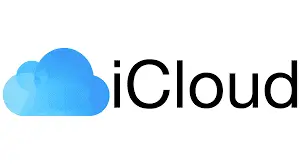Technologies evolve, which improves the quality of digital images. Some things that professional photographers could never dream of are now available to smartphone owners. But along with the quality, file sizes are also growing. According to Gitnux statistics, the size of an average mobile photo has increased 2-5 times over the past 10 years.
The demand for images is rising as well. Visual content dominates the Internet — to stay on trend, you need to continuously update, improve, and adapt it to the growing demands of your target audience. It's no surprise that memory cards are gradually becoming a consumable for digital camera owners, and smartphone memory is filling up within a few weeks.
A need for multimedia content backup tools arises. Cloud-based services that allow you to instantly transfer images to other people, publish pictures online, and access files from anywhere in the world are highly demanded. If you're looking for such an option, you should check out our best photo-sharing platform review.
The Need for Convenient Photo Storage Solutions
An average smartphone user takes nearly 3,000 high-resolution photos a year. For professionals working with multimedia, this number can grow to tens of thousands of images. Therefore, cloud storage designed specifically for images is a vital service that allows you to organize both personal photos and work-related materials.
It is especially true for a modern-day creator who is not just a photographer, designer, or artist. It is a versatile specialist who independently searches for clients, negotiates, discusses the results of their work, builds a portfolio, and performs dozens of other tasks. Given that such professionals can generate thousands of files within a month for dozens of different projects, they need a software solution to optimize their workflows. One that will allow them to store, sort, quickly find, share, and archive photos, and, in some cases, even make minor edits to them.
These services become even more essential when it comes to medium and large businesses. Companies generate terabytes of multimedia files every month and use these digital assets in product design, website content, marketing campaigns, email newsletters, and interior design for commercial premises. Their requirements are even broader: they need functions for teamwork on specific digital assets, creating collections, and securely distributing files to contractors, partners, clients, and other third-party stakeholders.
Cloud storage is the best online photo-sharing platform for several reasons:
- Reliability
There is no risk of losing digital assets due to damage to physical equipment, such as memory cards or hard drives.
- Convenience
Specialized services have tools for synchronizing with popular mobile applications, desktop graphic editors and backing up device memory.
- Safety
Modern clouds use reliable encryption systems that prevent data interception. They may also use additional security features such as biometric or two-factor authentication.
- Accessibility
The storage can be opened in the web interface — you just need any device with Internet access. This allows you to work with digital assets on the go, make impromptu presentations on the road, and transfer ready-made materials to clients from other countries.
How to Choose the Best Photo Storage Service
The key criteria will be disk space limits and subscription plans. When choosing the best photo-sharing platform, make sure you can host all the files you need and leave space for future projects. In addition, the service should fit your budget and be cost-effective for your business.
When choosing a cloud storage service, you should also pay attention to other parameters:
- Functionality
The availability of tools for quick distribution of digital assets, editing, collaboration, etc.
- Ease of sorting and searching for materials
Various filters for selecting files have already become a standard for online services. And custom tags and metadata management tools will be a nice and useful option.
- Image quality
Some cloud storage services impose restrictions on photo resolution or the size of individual files. Make sure they fit your needs and your media management policy.
- Security level
Information encryption and multi-step authentication are also considered common in this industry. If you take information security seriously, you should choose services that guarantee confidentiality and do not scan user data.
- Ease of access
Although the web interface is the most versatile way to view files in the storage, it is not always the most convenient one. That's why the availability of mobile and desktop applications is a big plus for each platform.
Top Photo-Sharing Services in 2024

1. Flickr
It is a candidate for the title of the best photo-sharing platform for photographers. The service has a user-friendly minimalist interface where everything is at your fingertips — in the main menu, you can see the upload and share buttons, as well as a search bar. As for sharing, clicking on the button opens a small window where you can find all the possible options — links to social networks, email creation tools, and even a code to embed the multimedia element on a website.
And the best part is that almost all the features are available to you for free. A basic subscription is enough to create your portfolio, build a multimedia library to fill your website, or publish a family photo album. And the extended version of Flickr Pro offers even more:
- Uploading over 1,000 photos in resolutions up to 6K;
- No ads in the interface for you and your customers;
- An analytics service with detailed statistics on views and downloads;
- Advanced access rights settings;
- The possibility of working with adult content.
The subscription cost is $9.49 per month, and if you subscribe for two years in advance, you will pay $5.99 per month.
| Pros | Cons |
|---|---|
| A free subscription with minimal restrictions on functionality | A basic subscription allows you to download 1,000 files regardless of how much memory they take up |
| Unlimited storage in a paid plan — restrictions apply only to photo resolution and video length | The free version contains ads |
| Convenient management with a large number of filters and binding commands to keyboard shortcuts | |
| Flexible settings for access rights to digital assets, | |
| Integrations with project management, marketing, design, and other tools |

2. 500px
If you wonder what is the best photo-sharing platform for creators, pay attention to this service. Its key feature is its own licensing system, which allows you to sell multimedia content and transfer the rights to use images, receiving income in the form of one-time payments and royalties. 500px allows you to build your small business literally from scratch with a camera or even a modern smartphone.
Another feature of cloud storage is the widespread use of AI. It facilitates the following processes:
- Searching for the necessary materials
You can describe photos with natural phrases like "red sun over blue sea." Even if the author doesn't specify the key features of the photo in the tags, AI will recognize them.
- Photo organization
You don't have to create folders and fill in metadata with tags. AI can do it for you. If you work with thousands of files, it saves hours of your working time.
- Image retouching
AI automatically selects and applies the best settings for tone, brightness, contrast, shadow illumination, etc. You have access to various presets that allow you to work without professional graphic editors in most cases.
A free subscription allows you to upload 7 photos per week and charges a large commission on payments. The basic Awesome plan cancels these limits and gives you all the royalties for $6.49 per month. Paying $12.99 per month for the 500px Pro subscription, you can create a personalized portfolio and publish your ads in the job search section.
| Pros | Cons |
|---|---|
| Offline browsing of the multimedia library is available for Android users | Low download limits in the free version |
| Convenient search by keywords, tags, colors, and many other features | Interface can be challenging for beginner users |
| Quests from the site administration that allow you to study and earn money at the same time | |
| Flexible settings for access rights to digital assets, | |
| Integrations with project management, marketing, design, and other tools |

3. Google Photos
It is a specialized multimedia storage from a top technology company. It will be the best photo-sharing platform for families because of two simple features. The first is the ability to create a family account. It will automatically copy photos from all connected devices and share them with all users. The second and most crucial feature is unlimited file uploads, even in the free version. If you limit the photo resolution to 15 megapixels and the video resolution to 1920x1080, the service will allow you to upload as many digital assets as you want.
A Google One subscription allows you to store and view files without losing quality. The following subscription plans are available:
- 15 GB — free of charge;
- 100 GB — $1.8 per month;
- 2 TB — $9 per month.
Earlier, we also told you how to move photos from Google Photos to Google Drive for better sharing and collaboration tools.
| Pros | Cons |
|---|---|
| The service has a built-in graphic editor for easy image retouching | Photos can only be shared individually — to work with collections of digital assets, you'll have to move them to Google Drive |
| Intelligent search allows you to select photos by people's faces or scene layout | Cloud storage is shared with other Google services |
| There is a function to share photos on social networks in one click | |
| Flexible settings for access rights to digital assets, | |
| Integrations with project management, marketing, design, and other tools |

4. Pics.io
It is a digital asset management (DAM) platform for professionals and businesses. One of the key features is the Pics.io Google Drive integration and the ability to work with Amazon S3 storage. The service also has its own flexible storage.
Google Drive Digital asset management extends the capabilities of a regular cloud storage. The DAM platform allows you to organize, search, and retrieve multiple files in different formats with the help of advanced metadata. Keywords, automated AI tagging, custom metadata fields - all this and more is available with Pics.io DAM.
File sharing is a matter of a couple of clicks. You can easily send and receive various digital assets from the responsible persons — designers, managers, marketers, etc. through customizable portals - websites and inboxes. You can also set up user permissions for these portals.
The cost of a Pics.io subscription depends on the number of users:
- No users included — $50 per month, users can be bought additionally;
- 10 users — $150 per month;
- 50 users — $500;
- 100 users — $1100.
- customizable Enterprise plan for more than 100 users - conditions to be discussed with each team individually
| Pros | Cons |
|---|---|
| Flexible settings of access rights to digital assets for individual users and workgroups | Can be pricey for small companies |
| Version control and comparison of different file versions | |
| Ability to create custom-made watermarks for copyright protection | |
| Flexible settings for access rights to digital assets, | |
| Integrations with project management, marketing, design, and other tools |

5. Amazon Photos
It is another service that largely copies its competitor, Google. It also has a user-friendly minimalist interface, a built-in graphic editor for basic image processing, and an intelligent search function. Its unique feature is the convenient streaming of multimedia content to Amazon devices, such as Fire TV.
Another aspect that motivates users to stay in the company's ecosystem is the pricing policy. Cloud storage allows Amazon Prime subscription holders to store an unlimited number of photos and 5 GB of video per person. For everyone else, the following subscription plans are available:
- 5 GB of files — free of charge;
- 100 GB — $1.99 per month;
- 1 TB — $6.99;
- 2 TB — $11.99;
- 3 TB — $14.99.
| Pros | Cons |
|---|---|
| Availability of a secure "storage within the storage" — Amazon Family Vault | Severe restrictions on video uploads |
| Favorable terms of use if you have a Prime subscription | High rates without a Prime subscription |
| Easy sharing of photos on social networks | |
| Flexible settings for access rights to digital assets, | |
| Integrations with project management, marketing, design, and other tools |

6. iCloud
It is Apple's cloud storage available by default to iPhone, iPad, iMac, and MacBook owners. iCoud is conveniently integrated into iOS and allows you to back up all data on your device to restore it in case of loss or damage to the device. The key advantage of the service is a one-click file transfer to the cloud and the possibility to view photos in the standard iOS Gallery.
As for the pricing policy, Apple has the following offers:
- 5 GB — free of charge;
- 50 GB — $0.99 per month;
- 200 GB — $2.99;
- 2 TB — $9.99;
- 6 TB — $29.99;
- 12 TB — $59.99.
| Pros | Cons |
|---|---|
| Flexible customization of subscription plans | No support for Android |
| Seamless integration into iOS | Minimal number of integrations outside the Apple ecosystem |
| High-speed access to photos and videos in high resolution | |
| Flexible settings for access rights to digital assets, | |
| Integrations with project management, marketing, design, and other tools |

7. Adobe Portfolio
It is a professional service for creators that can be the best photo-sharing platform for groups. It allows you to store images and organize them into portfolios - personalized websites to showcase your work samples. You don't have to be a designer or programmer to do this — a simple, intuitive builder is used to create the site.
If you're familiar with Adobe's business model, you know that Portfolio is included in the Creative Cloud subscription. It starts at $28.79 per month. But it's worth clarifying that it also includes useful programs like Photoshop and Lightroom. In addition, you get 1 TB of cloud storage.
| Pros | Cons |
|---|---|
| Seamless integration with Adobe applications | You'll have to sign up for a rather expensive subscription |
| No additional costs if you already use professional Adobe applications | Adobe charges additional fees for the use of certain functions, for example, for hosting your portfolio |
| The company periodically holds promotions with substantial discounts on annual subscriptions | |
| Flexible settings for access rights to digital assets, | |
| Integrations with project management, marketing, design, and other tools |

8. ImageShack
If you're looking for a completely unlimited solution for everyday use, opt for this platform. Even with a basic subscription, it allows you to store an unlimited number of files in their original resolution, without compression or quality loss. You also get tools for creating watermarks and backing up photos from all your devices.
There are three subscription plans that differ in the scope of downloads per month:
- Up to 30 GB — $3.99 per month;
- Up to 1 TB — $29.99 per month;
- Up to 4 TB — $99.99.
| Pros | Cons |
|---|---|
| Detailed analytics of digital asset usage | No free version |
| Image search by metadata | Outdated interface compared to other services |
| Creating collections | |
| Flexible configuration of access rights to storage, folders, and individual files | |
| Integrations with project management, marketing, design, and other tools |

9. Photobucket
This service may be the answer to the question of what is the best photo-sharing platform for business. It serves as a kind of image hosting service and provides tools for embedding images on websites, sharing them on social media, and generating links to digital assets. Another advantage of Photobucket is its rather sophisticated graphic editor, which allows you to cut out certain parts of a photo, change the resolution, and even hide people's faces.
But there's one crucial aspect worth paying attention to. For $5 a month, you get only 1 TB of storage. Photo hosting, sharing tools, and a graphic editor are available in a professional subscription that costs $8 per month.
| Pros | Cons |
|---|---|
| Automatic photo backup from mobile devices | Small storage limits compared to competitors |
| Guaranteed quality preservation due to the complete absence of additional image compression | Basic subscription does not support video uploads |
| Sharing photos on social networks with one click | |
| Flexible configuration of access rights to storage, folders, and individual files | |
| Integrations with project management, marketing, design, and other tools |

10. SmugMug
This storage service is an ideal choice for those looking for the best family photo-sharing platform with the possibility of upgrading to a professional version in the future. Even with the basic version, you get unlimited disk space and the ability to upload files in full resolution. And the top plans allow you to create portals with custom URLs, work with RAW images, and even sell your photos for royalties.
Unfortunately, you have to pay a pretty penny for this functionality. The following subscription options are available:
- Portfolio — $31 per month for basic editing and sharing tools, as well as receiving the full amount of royalties;
- Pro — $45 per month for a full range of marketing tools such as coupons, discounts, tiered price lists, and personalized offers for regular customers;
- Venture — individual conditions for businesses. Dedicated support service, the ability to create custom solutions for integrating the service into existing software systems.
| Pros | Cons |
|---|---|
| Convenient platform for making money on creativity | No free subscription |
| The function of selling physical copies of photos and drawings | Poor photo editing functionality |
| Tools to protect images from theft and illegal resale | |
| Flexible configuration of access rights to storage, folders, and individual files | |
| Integrations with project management, marketing, design, and other tools |

11. Dropbox
Dropbox is a multi-purpose cloud storage service that supports 35 digital image formats. It has tools for previewing and sharing files, as well as quickly publishing photos on social networks. You can also set up backups of your digital assets from all your devices — mobile and desktop.
To work with photos, you can buy one of the following Dropbox subscriptions:
- 2 GB — free;
- 2 TB — $9.99 per month;
- 3 TB — $16.58.
| Pros | Cons |
|---|---|
| Supports most RAW photo formats | No image editing tools |
| Reliable protection thanks to modern information encryption technologies | Inconvenient distribution of files outside the platform |
| Ability to remotely delete data on a stolen or lost device | |
| Flexible configuration of access rights to storage, folders, and individual files | |
| Integrations with project management, marketing, design, and other tools |

12. Facebook
This social network can be called the best photo-sharing platform free of charge because it does not set limits on the number of images in an account. A public profile also serves as an ideal portfolio that can be found in seconds. Moreover, you have access to targeted advertising features that make it easier for professionals and businesses to find clients.
| Pros | Cons |
|---|---|
| Completely free platform — you only need to spend money on advertising | Image resolution is limited to 2048x2048 pixels |
| Automatic recognition of people's faces in the frame | Minimal privacy settings — you can hide your account but not prevent people from downloading your photos |
| Sharing with individuals and groups in one click | The platform uses harsh image compression algorithms that degrade photo quality |
| Flexible configuration of access rights to storage, folders, and individual files | |
| Integrations with project management, marketing, design, and other tools |

13. Instagram
It is another Meta social network with an emphasis on photos rather than textual content. It offers convenient tools for basic image editing, a large number of filters, and easy viewing of profile pictures. Instagram will be an ideal option for creating a portfolio for a beginner photographer.
| Pros | Cons |
|---|---|
| A free platform available to everyone | Images are cropped to a non-standard format — from 1:1 to 1:91 |
| A wide range of advertising tools created specifically for media promotion | Maximum resolution is 1350×1080 |
| Ability to tag people in your photos | The platform is convenient to use only on mobile devices |
| Flexible configuration of access rights to storage, folders, and individual files | |
| Integrations with project management, marketing, design, and other tools |

14. iDrive
Universal cloud storage with a modern system for protecting confidential information and convenient device backup functions. It offers basic functionality for working with photos — previewing, publishing to social networks, and sharing. But the last point is worth paying special attention to. You can set passwords, accessibility periods, and limits on the number of uploads for both individual digital assets and collections.
The storage has the following subscription plans:
- 10 GB — free of charge;
- 100 GB — $2.95 per month;
- 5 TB — $6.22 per month.
| Pros | Cons |
|---|---|
| Reliable data protection | No photo editing features |
| Convenient applications for all popular operating systems | |
| Availability of tools for sharing digital assets | |
| Flexible configuration of access rights to storage, folders, and individual files | |
| Integrations with project management, marketing, design, and other tools |

15. Internxt
If you think Dropbox's security level is impressive, wait until you see what Internxt has to offer. The company uses its own solutions to encrypt information, which provide even better protection than generally accepted industry standards.
Internxt is also the best platform for photo sharing with no monthly fees. It allows you to buy lifetime access to storage at the following prices:
- 2 TB — $199;
- 5 TB — $299;
- 10 TB — $499.
| Pros | Cons |
|---|---|
| Flexible subscription plans, including customization of subscriptions for businesses | No specialized tools for working with photos |
| Simple interface, convenient file sharing tools | Subscriptions with a monthly fee are more expensive than competitors |
| Prompt technical support | |
| Flexible configuration of access rights to storage, folders, and individual files | |
| Integrations with project management, marketing, design, and other tools |
Conclusion
When choosing an online platform for working with images and other multimedia content, you should focus on the limits of the disk space available to you and the subscription plans. But remember the functionality that should meet your professional needs — separate portfolio pages will be especially useful for photographers, and tools for embedding images into websites will be beneficial for online marketers. You should also pay attention to the ease of use of the service — the simplicity of its interface, the availability of technical support, and accessibility from different devices.
Did you enjoy this article? Give Pics.io a try — or book a demo with us, and we'll be happy to answer any of your questions.






